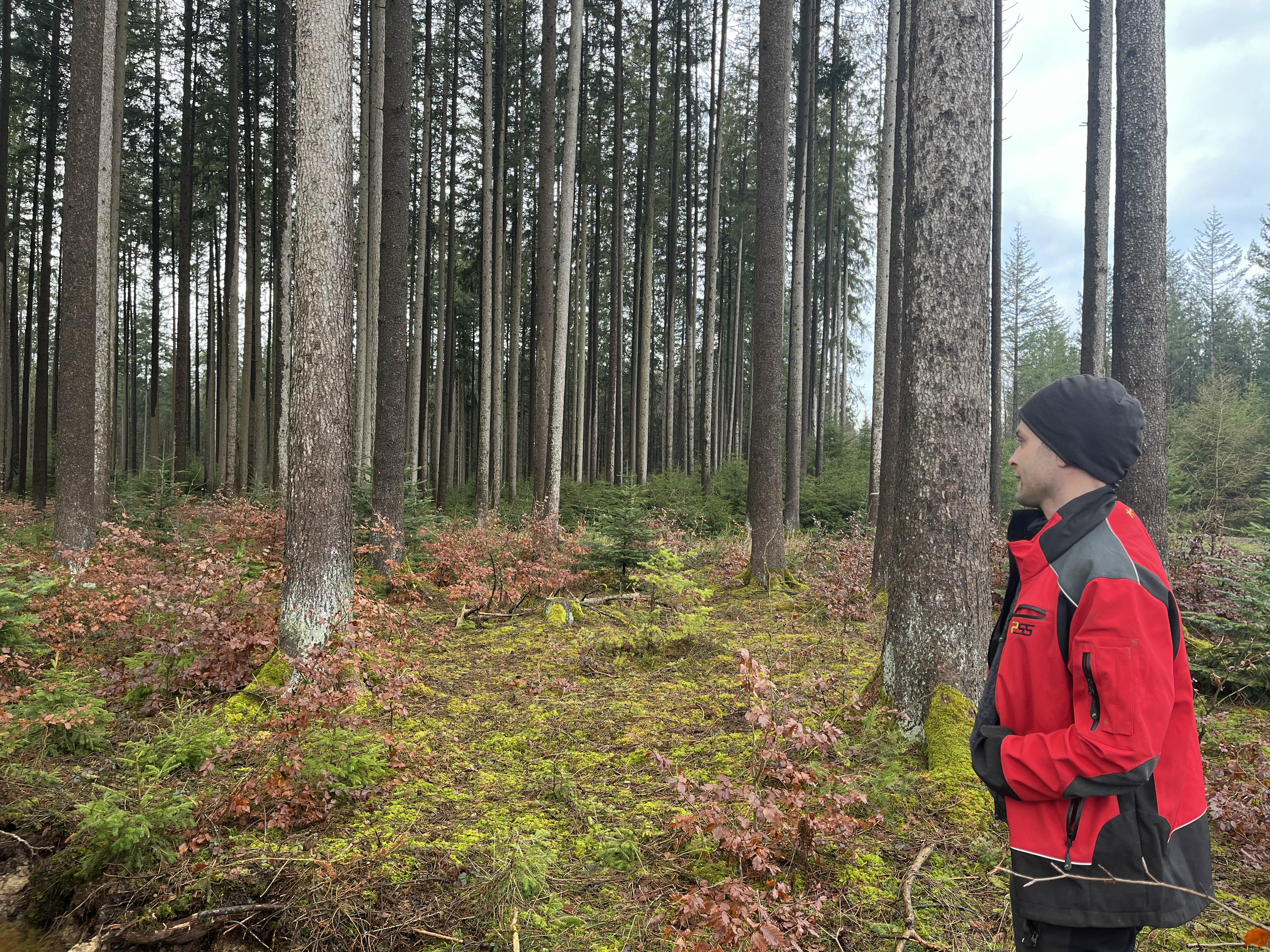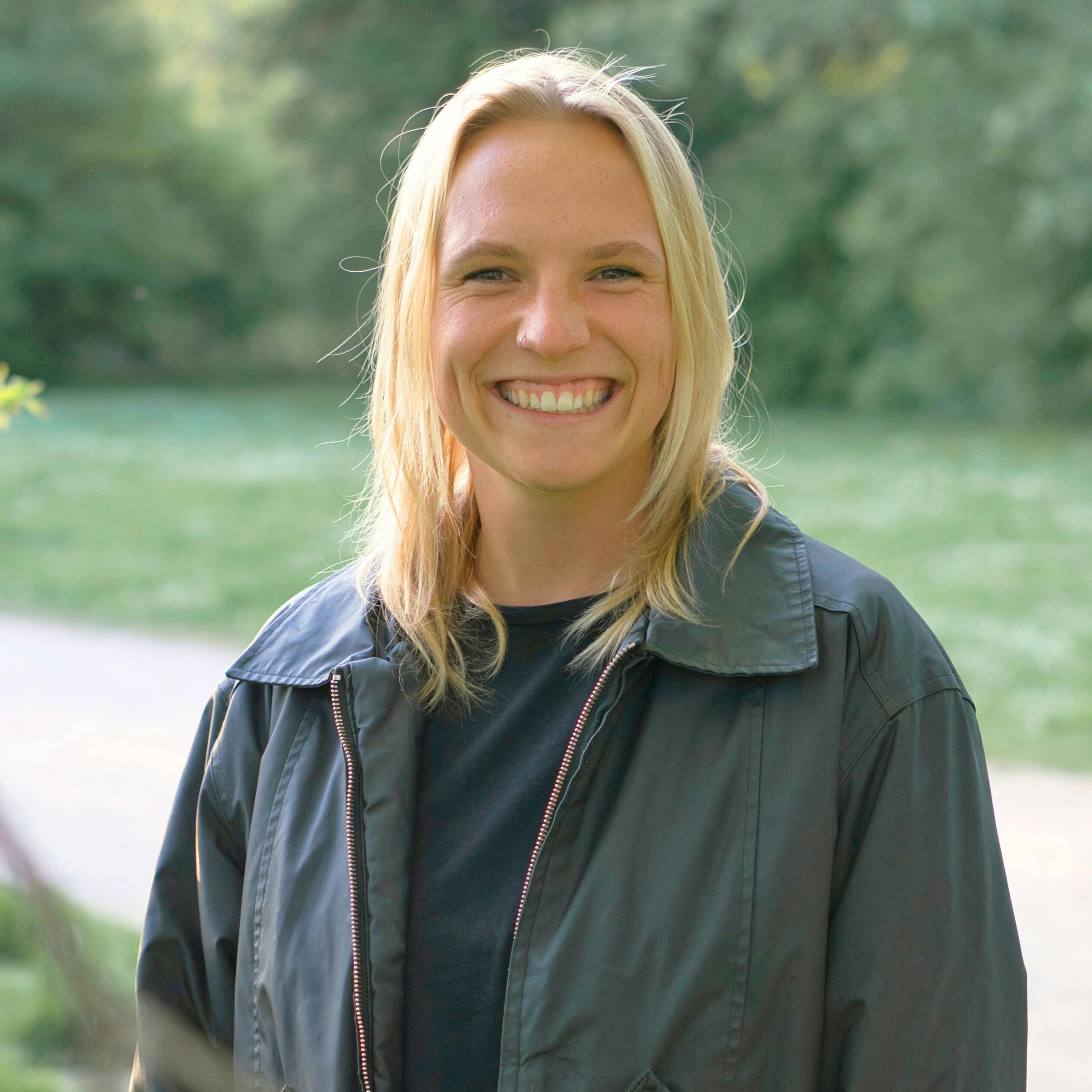
Grossaitingen and Mammendorf, Bavaria
"We're doing this for the next generation!"
Located 20 kilometers south of Augsburg in Germany, a climate protection project is underway, transforming two spruce-dominated forests into diverse mixed forests. By introducing a variety of tree species, these forests will become more resistant to climate change and are expected to store 1,420 tons of CO2 annually over the next three decades. This transformation will not only turn these areas into significant carbon sinks but also refuges for biodiversity.
The challenge:
✔️ Mixing spruce stands
✔️ Preparing forests for extreme weather events
✔️ Increase CO2 storage
Some of the trees in the forests of Grossaitingen and Mammendorf are 200 years old. There was no talk of climate change back then. Not even almost 100 years later in the post-war period when many areas were reforested. Spruce trees in particular were planted back then. They grow quickly and provide popular wood for durable products such as houses and furniture.
Today, things are different and climate change is a major concern for foresters and forest owners. Although managed forests, as carbon sinks, are one of the best weapons in the fight against climate change, they themselves are at great risk from it - as are the animals that live in them. The forests south of Augsburg are home to numerous species of birds and amphibians, deer, foxes, martens, and many other animals.
But extreme weather events are on the increase. This was also the case in Großaitingen in 2023, where a huge hailstorm with hailstones the size of golf balls left a trail of devastation in its wake. The result was bare trees, damaged bark, and a forest floor that is still littered with needles, leaves, branches, and brushwood several centimeters high. Even some of the 200-year-old pine trees did not survive the hail and eventually had to be removed to make room for healthy trees.

Hail damage in the forest in Großaitingen. (Photo: OCELL)
"We want to make the forest fit for the future."
It is already apparent that some trees can cope better with such extreme situations than others. Mixed forests with different age classes - multi-generational forests, if you like - reduce the risk of an entire stand being destroyed.
Forestry operations manager André Dubetz confirms this in his plan to press ahead with forest conversion. Monocultures must be converted into climate-resilient mixed forests. "This is a very long-term project that costs a lot of money." This change cannot be achieved through natural regeneration alone, i.e. the natural reproduction of trees. And so André Dubetz and his employees have to intervene themselves. They have planted over 100,000 fir trees and just as many beech trees in recent years. But this is not enough to make the forest fit for the future and to be able to manage it sustainably for a long time to come.
How the climate protection project is supported by OCELL:
Numerous other measures are needed to mix the forest even more. As a next step, an additional 200 to 300 fir trees per hectare are planned for certain stands. In total, the climate protection project will cover an area of 1,456.9 hectares. Fir trees are well suited as they stabilize the stand with their deep root system and reach deeper layers of water. This makes them less susceptible to drought. In addition, the fir, a shade tree species, rejuvenates quickly: after around 40 to 50 years, it can reproduce itself in the shade of the old stand - where it is still too dark for other trees.
But since "mix, mix, mix" is the forester's motto, a few other tree species are to be added: Beech, larch, oak, alder. Also chestnuts, cherries, and other wild fruit. André Dubetz also occasionally tries to introduce non-native tree species: "If someone hadn't tried planting Douglas firs over 100 years ago, we wouldn't know today that they also grow very well here."

Forester André Dubetz mixes his spruce forest with beech trees to diversify the forest and make it more climate-resilient. (Photo: OCELL)
"To diversify the risk from climate change, we need to create mixed forests."
Climate change makes it necessary for foresters to look for new solutions to make their forests resilient. To diversify risk, the Lotzbeck forest therefore relies on three to five tree species per area. "We are doing this out of an inner conviction. It will prove to be true that only a mixed forest will be sustainable."
However, planting alone is not enough. Dubetz regularly checks whether any disadvantaged trees need to be supported. This can be the case, for example, if neighboring trees become too dominant and literally overshadow young trees. To give the still-small plants a chance, trees are therefore removed selectively. Beech trees are typical of this. They can grow very tall and mighty, crowding out other tree species around them. The result would again be a monocultural beech forest that could not withstand climate change.
"Decommissioning is not the solution. The forest stores significantly more carbon if it continues to be managed."
This is why Dubetz does not believe in large-scale set-asides that leave forests to their own devices. "Then I might end up with just beech trees and no resilient mixed forest again." Set-asides are also not conducive to CO2 storage. The forest initially always has the same carbon storage balance - whether it is left to its own devices or actively intervened in. However, when trees rot at some point, carbon is released. For this reason, in Großaitingen, for example, unstable, old spruce stands are removed in good time and processed into long-lasting wood products. This allows the young trees growing underneath to receive more light and grow better so that they can absorb more CO2 in the future. The managed forest thus unfolds its great carbon storage potential. Thanks to the climate protection project, the company can wait until the CO2 optimum before harvesting wood, i.e. leave the trees standing longer than is economically necessary. This allows the forest to store more carbon. Over the next 30 years, this will amount to 42,600 tons of additional CO2.
The forester:
André Dubetz was born into his profession. He is a third-generation forester. His grandfather was a district forester in Thuringia, where his father still works today. After studying in Göttingen, Dubetz himself first moved to Hesse and Brandenburg and finally to Bavaria. And he did so despite his father initially advising him against the profession. "When I started my studies, there were too many graduates and it was difficult to find a job. But I've always been enthusiastic about the forest and I put my heart and soul into my job," says André Dubetz. You have to be because it's not a nine-to-five job.
In addition to numerous office tasks such as drawing up business plans and applying for funding, Dubetz spends a lot of time in the forest every day. He has been the "manager for the forest" in Großaitingen and Mammendorf for 13 years. "I enjoy creating something for future generations. Our work is ecologically, socially, and economically relevant. That's great!" All this work pays off. In 2022, the company was awarded the Bavarian State Prize for exemplary forest management.
This project contributes to the following United Nations Sustainable Development Goals:

